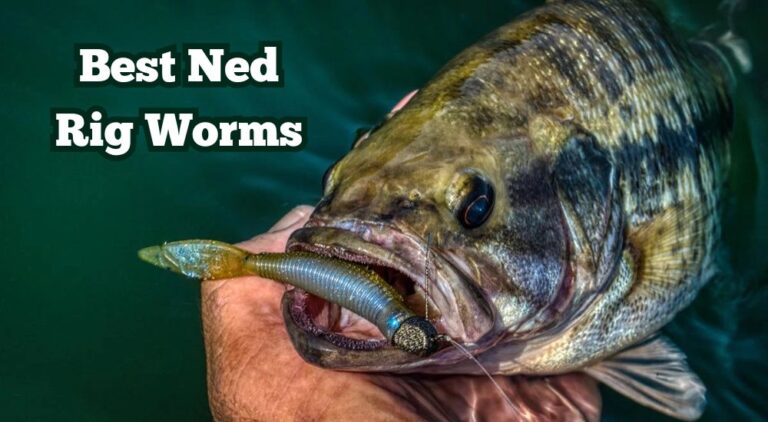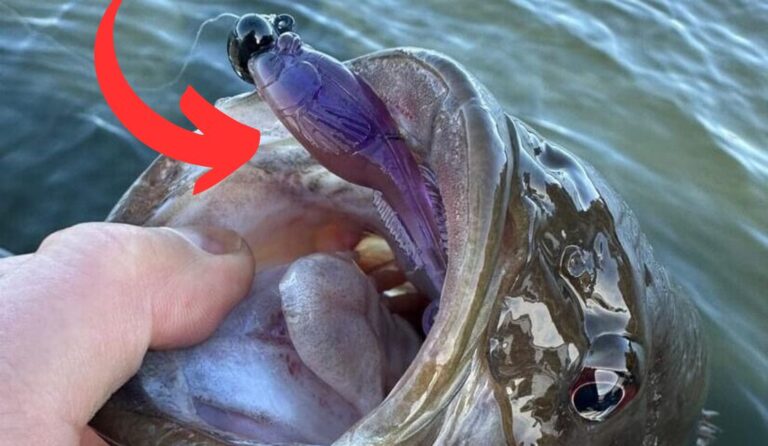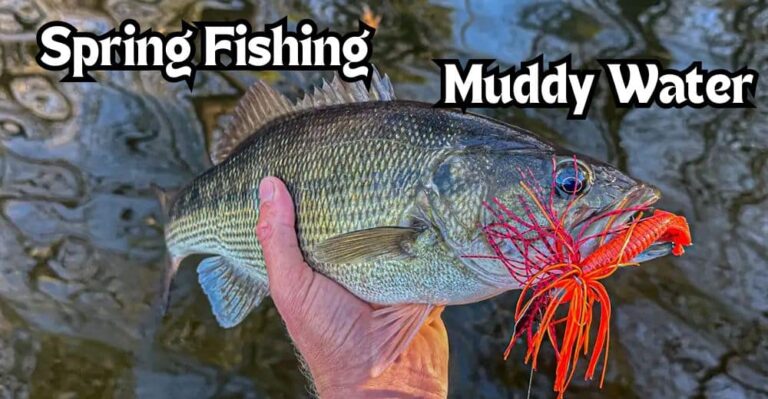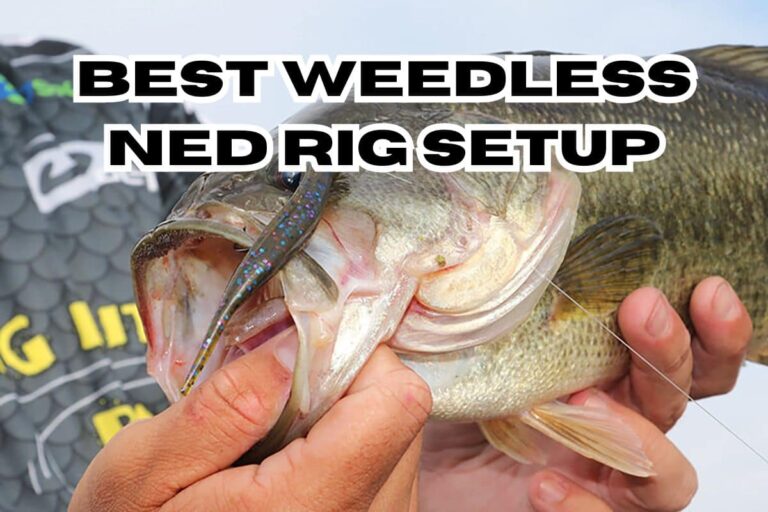Glide Bait Bass Fishing

Glide baits are one of the most interesting and enticing bass lures out there.
They look absolutely awesome and have potential to catch the biggest bass in the lake.
But they can be very intimidating and difficult to use it you don’t know what you’re doing.
So let’s get you all the info you need to get started with glide bait bass fishing.
Glide Bait Design

Glide baits have fairly simple designs. They are single jointed hard baits that mimic big baitfish.
They can be easily mistaken for hard body swimbaits, but the key difference is the number of joints.
Glide baits only have one joint, but hard swimbaits have 2-4 joints.
This single joint causes the lure to glide back and forth in wide, zig-zag patterns.
Glide baits usually range from 6-12 inches in length, but there are some that are a couple inches bigger and smaller.
2 Styles of Glide Baits

Chopping Style
The lure one the left, is a chopping style glide bait. The joint has a very wide range of motion and bends over almost 90 degrees.
These glide baits have a much tighter glide when retrieved with a straight reel.
However, if you use a quick, chopping retrieve where you almost walk the dog with them, they snap back and forth incredibly well.
This action looks very similar to a walking bait, but a lot more fluent and realistic.
Traditional Style
The lure on the right, is a more traditional style glide bait. The joint angle is very small and limits the range of motion to around 20-30 degrees.
These glide baits are fished much slower. With either a slow reel, long pulls, or jerks and pauses.
Traditional glide baits don’t chop back and forth. Instead, they glide very far in a zig-zag pattern.
These glide baits can glide 2-3 feet to each side and displace a lot of water.
Why Use a Glide Bait?
This might seem like a strange question, but any time you are thinking about tying on a lure, you should have reasoning behind it.
The main reason to use glide baits is to catch really big bass. As the saying goes, big baits catch big fish.
And this is certainly the case with glide bait fishing. Big bass will come unhinged to eat a glide bait that is slowly meandering or chopping around.
A lot of anglers have caught their PB bass on big glide baits. Another reason to fish glide baits is that they are super fun.
Just looking at a glide bait makes you want to tie one on and go fishing. And at the end of the day, fishing is all about having fun.
How Glide Baits Attract Bigger Bass

Bigger Profile
The large size of glide baits is certainly the main way the attract bigger bass.
Although big bass do eat forage of all sizes, they much prefer big shad, bluegill, and other small bass.
These large meals fill up the bass with minimal hunting effort.
It would take 5-10 small baitfish or crawfish to match the size of one big gizzard shad or other forage that a big glide bait mimics.
And big bass are all about efficiency when it comes to their eating habits.
More Realistic
Big bass are very old, mature, and wise. They have seen thousands of lures, soft plastics, hooks, and have probably been caught by all of them.
These wise old bass are often much more picky about how they eat.
Glide baits are incredibly realistic lures. They have the prefect baitfish profile, detailed paint jobs, and very realistic swimming actions.
Glide baits are much better at fooling the bigger, older bass than most lures.
Drawing Power
Bass can not only see and hear lures in the water, but they can also feel them.
This is the primary way they hunt prey, especially in muddier water. As the big glide bait moves through the water, it displaces a lot of water.
This water displacement can be felt by bass and gives them an accurate idea of how big the bait is.
This is called drawing power. And since big bass prefer bigger prey, they will feel the big glide bait and hunt it down from a long distance away.
Where to Fish Glide Baits

Glide baits are primarily a shallow water lure. They work best around shallow brush, docks, grass lines, or rock piles.
You don’t need to fish the glide bait in this cover because it has the ability to pull bass out to come eat it.
Points are also a great place to fish glide baits. The glide bait can pull up the bass from the slightly deeper water to come eat it.
Lastly, glide baits are great for targeting schooling bass. Especially during the fall, bass will school up and wait for schools of baitfish to come around.
Targeting these schools with a glide bait will catch you the biggest bass in the school.
How to Retrieve Glide Baits
Your retrieve is going to depend on which style of glide bait you are using.
I’ll give a couple retrieval techniques for each style.
But the best way to learn how to retrieve these baits is to just fish them.
Play around with different techniques and just use what looks and feels best to you.
Chopping Glide Bait Retrieve
The primary retrieve is going to be similar to walking the dog.
Small, sharp jerks of your rod tip will cause the glide bait to dart side to side very quickly and rotate almost 180 degrees with each jerk.
Another great retrieve is the burn and stop. And the name pretty much says it all.
Quickly burn in the glide bait for 6-8 reel turns, and then kill it. Let it sit for a couple seconds and then repeat.
Traditional Glide Bait Retrieve
Traditional glide baits are fished a lot slower. The first retrieve is just a slow roll.
A slow and steady reel will make the bait slowly meander and glide back and forth.
A jerk and pause retrieve is also great. Similar to walking the dog, accept you jerk harder and pause after each one.
Give a hard jerk and then let the big bait glide for 1-3 feet until it stops.
Getting Followers to Commit
Glide baits are notorious for have bass follow them without committing.
Bass will often follow right behind the glide bait for a long distance, just to turn away at the last second and not bite.
The first thing to understand is that no matter what you do, this will happen sometimes.
So don’t feel discouraged or feel like you did something wrong when you get a follower that doesn’t commit.
With that being said, there are a couple ways to get these bass to bite. These are the two best ways to do it.
There are also a couple of glide bait modifications that will help bass commit better.
Speed It Up
I know, the last thing you want to do when a bass is inches behind your lure is speed it up.
You probably want to keep it as close that bass as possible for as long as possible.
But this is the last thing you should do. Speeding up your retrieve by 50-100% can trigger bass to bite immediately.
The bass think that their prey is trying to get away, and they need to act fast.
They will often burst up to the glide bait and try to eat it.
The 180
The 180 is actually my favorite way to trigger a strike from followers. What you do is drop a lot of slack into your line.
Then give the bait one very quick and firm twitch. This will cause the glide bait to do a full 180 and look head first at the following bass.
The bass just can’t seem to handle this. As soon as they see their prey look them in the eyes, they crush it.
This move is a bit easier to do with higher end or chopping style glide baits.
Gear for Glide Bait Fishing
If you are using a small glide bait, you can actually get away with a standard medium-heavy action baitcasting rod.
And I am sure you already have at least one of those. But for the full sized glide baits, you’re going to need some upsized gear.
Reeling this In
Also Read: 3 Best Entry Level Glide Baits
Glide baits are effective lures for catching large bass due to their simple, single-jointed design that creates a wide, zig-zag swimming action.
There are two styles: chopping, which mimics a quick, darting movement, and traditional, which glides slowly in a wide pattern.
Their realistic look and substantial water displacement attract big, wary bass, especially in shallow waters and around structures.
With the right retrieval techniques and gear, glide baits can significantly enhance your fishing experience, making them a valuable addition to any angler’s arsenal.






